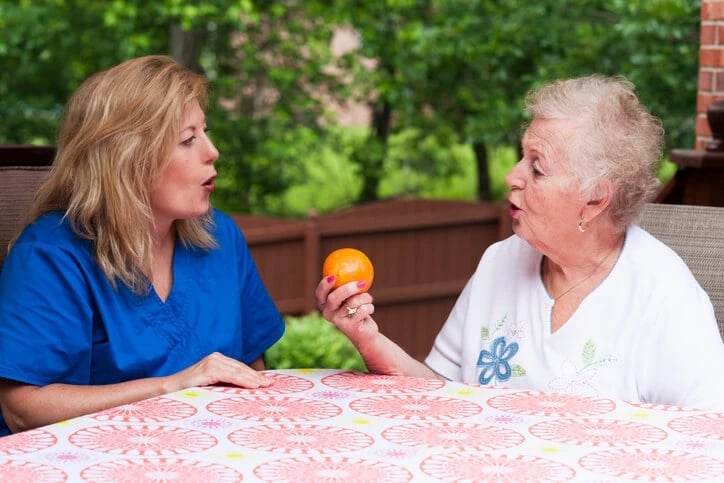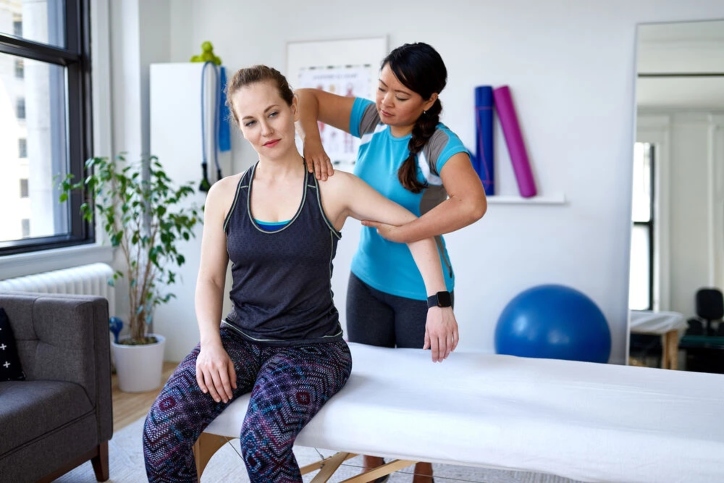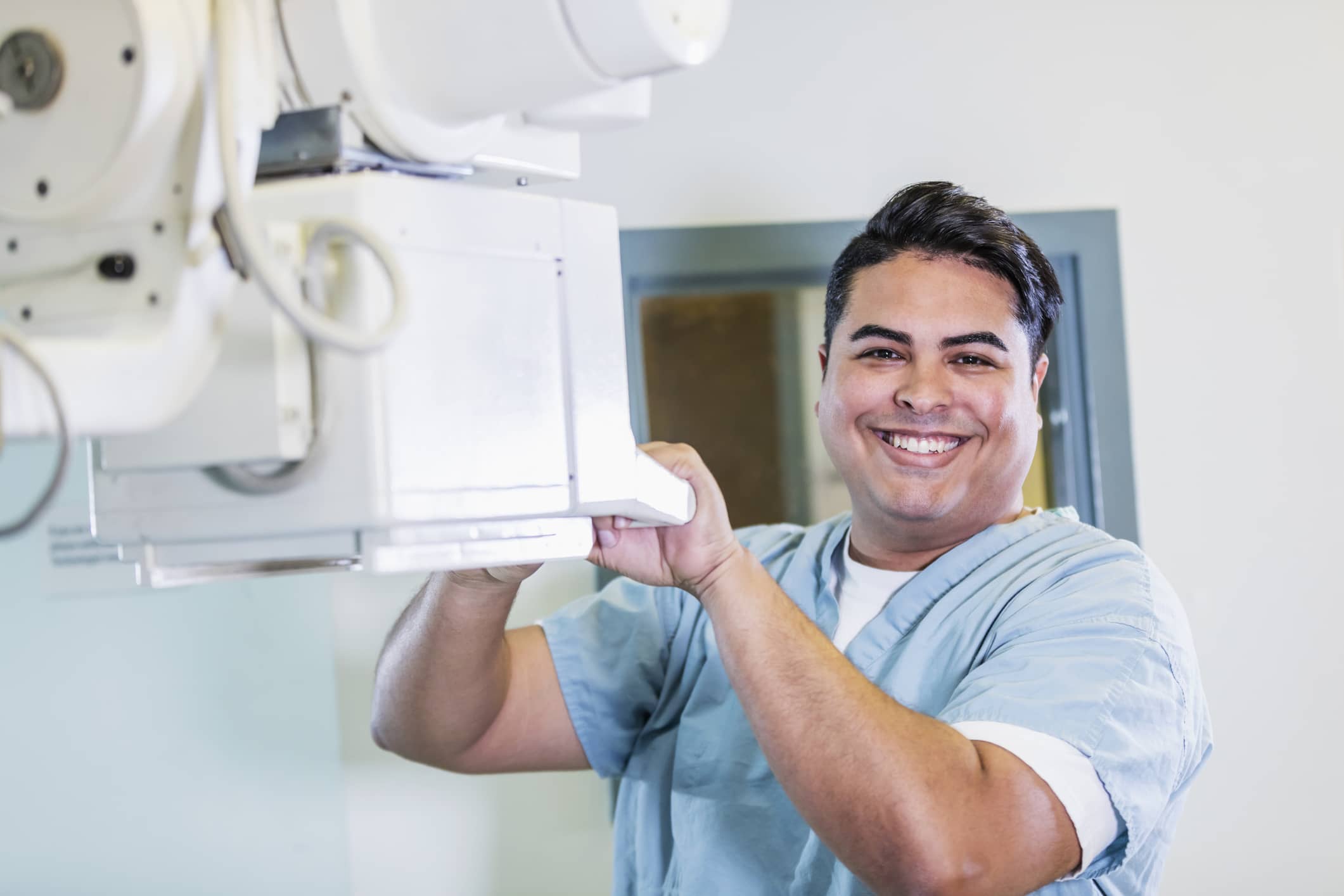
How Occupational Therapists are Using Mirror Therapy for Their Stroke and Paralysis Patients
Occupational therapists use mirror therapy to help partially paralyzed and stroke patients. It's a low-tech tool that's easy to implement in any OT environment, and it's leading to positive results for many practitioners.
Find out more about this tool and how you might use it in your own practice.
What is mirror therapy?
During mirror therapy, a mirror is placed along the person’s sagittal plane, so they can't see the side or limb impacted by paralysis or stroke. The OT then provides instructions for completing simple movements, and the patient observes via the mirror as they move their own healthy limb or body part.
At the same time, the patient tries to move the affected limb or body part in the same manner. The idea is that the mirror will reflect the activity on the healthy side of the body across both sides, "tricking" the brain. Neurons in both sides of the brain come to life based on the perceived motion. The therapy helps recover motor function by rebuilding the neural pathways impacted by the stroke.
This therapy can help with conditions experienced after a stroke, including hemiparesis, which impacts around 80 percent of stroke survivors.
Benefits of mirror therapy
The use of mirror therapy for stroke victims follows the success of the method in treating phantom pain. It's used as an additional treatment for stroke patients and is intended to improve both motor function and daily activities.
In contrast to other therapies, action observation via mirror therapy can be advised for patients who have severe limb weakness in the arms and legs. It's also believed to improve gait in stroke patients for improved mobility. Clinical benefits have been noted in small trials and wider studies are needed to show more conclusive results in a larger population.
How to use mirror therapy for strokes
The person who administers the mirror therapy stands in front of the patient on the other side of a table or mirror, if a large mirror is used. The occupational therapist or administrator supervises the movements made on the side of the mirror with the unaffected limb and the side with the affected limb. Make sure the client is looking at the reflection of their healthy limb in the mirror.
The duration of treatment depends on the severity of the injury, with a typical protocol lasting four weeks. To be affective, mirror therapy for stroke survivors should be conducted five days a week. After being shown how to do it, some patients may be able to do the therapy at home. The therapy should be conducted for a minimum of 30 minutes daily, but it can be split into two shorter periods for the comfort of the patient.
Who's the right patient for mirror therapy?
Not all stroke victims benefit from mirror therapy. One of the elements to consider is patient motivation, as the therapy can only work if patients commit to the almost daily investment of time.
The client must be able to follow instructions, which isn't possible for certain conditions. Clients who wish to do the therapy at home have to be self-directed and motivated to stick to the regime.
Studies show that both men and women and right- or left-handed people benefit from the therapy, even if the stroke impacted the dominant side.
Sarah Gray, Psy.D., Clinical Psychologist at Integrative Psychology and Behavioral Medicine, reveals how she uses mirror therapy in her practice:
"I actually use this as a health and rehabilitation psychologist with my patients with hemiparesis from stroke, but also those with chronic pain, especially pain in one area, on one side or in cases of complex regional pain syndrome. It has been found to be more effective when one starts with Graded Motor Imagery first and then works up to the mirror box training, but has been shown to reduce pain and/or improve ROM in some patients."

Who can give mirror therapy?
Occupational therapists can provide mirror therapy, but other qualified health professionals can also administer it. If the mirror therapy for stroke survivors is done at home, a family member or caregiver can help, or the patient might be able to self-administer the treatment after a brief explanation to show them how to do it.
If the weakness on one side of the body is too severe and the patient can't complete movement with the affected side at the same time he or she moves the healthy side, an occupational therapist can help guide or control the movements passively. In these cases, the patient may not be able to do the exercises at home.
Weekly follow-ups are key with clients completing the therapy at home, whether it's self-administered or a family member is helping. This is to ensure the patient is following instructions, understands what exercises to complete and can do them correctly.
The aim is also to vary the degree of difficulty and answer any questions the patient or family member has. The follow-up can be completed over the phone, in person or via an internet portal, depending on the patient and his or her support system.
By learning and using mirror therapy for stroke survivors in your practice, you're giving your patients one more tool to help them regain control of their bodies and their lives.
Additional Allied Healthcare Resources:
- AMN Passport: Our all-in-one allied app for booking allied travel jobs.
- Refer-a-Friend: Make up to $2,000 per referral.



